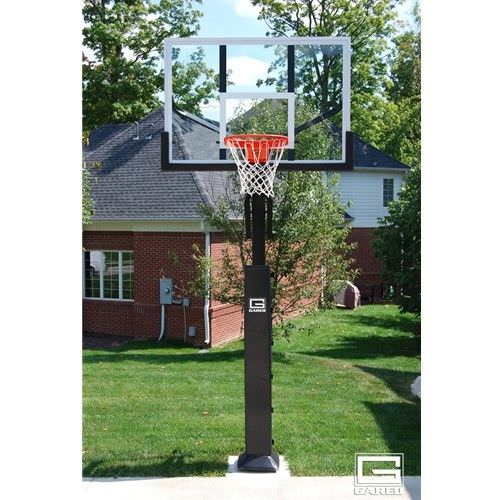So you think you want to own a basketball hoop?
Basketball hoops, goals and systems generally refer to the same setup: a goal that features a backboard, a rim, and a supporting pole. But, there are several things, like size, installation, and more, that will determine how well your goal performs over time, how much your goal will cost, and beyond.
 In this guide, we’ll walk you through the initial planning phases of browsing and eventually purchasing an inground basketball hoop. You may have a few of the big-name brands in mind for your purchase, but maybe you haven’t considered one or more of the following factors:
In this guide, we’ll walk you through the initial planning phases of browsing and eventually purchasing an inground basketball hoop. You may have a few of the big-name brands in mind for your purchase, but maybe you haven’t considered one or more of the following factors:
1. To Install or Not To Install?
There are two styles of basketball hoops: portable hoops and inground hoops. Portable hoops are typically anchored to the ground with a large plastic base that is equipped with wheels. Usually, a base is held down with heavy sand or other weighted materials. The wheels allow players to move the hoop from one place to another, like from the backyard storage space to the driveway for a pickup game. Of course, it’s more complicated to move a hoop from one home to another for an afternoon game of horse, but if you have the means, it’s possible with a portable hoop.
An inground hoop is installed directly into the ground. They take up less ground space than a portable hoop, but they are permanent, and cannot be moved from one place to another for convenience. A large, flat, paved surface like a driveway is the best location for an inground hoop.
2. Size Matters
Sizes do matter. For example, a small backboard, like a 44’’ backboard, is ideal for kids and young teens. For athletic teens and adults, a 44’’ backboard won’t cut it. These groups will prefer a larger 54’’ backboard, and will find the best performance with the regulation-sized 72’’ backboards.
Rims matter, too. Teens and adults often enjoy swinging from the rim after a good shot. If the hoop isn’t equipped to hold their weight, then the backboard might shatter under their pressure.
Goal height also matters. Goals that are below 7.5 feet tall do not meet the ASTM safety requirement, which declares that goals must adjust to at least 7.5’ to prevent player impact with the goal, as these run-ins can cause serious head injuries.
Consider the materials when browsing basketball hoops. Graphite and acrylic backboards might satisfy toddlers and kids, it won’t cut it for the serious player. Most prefer professional-grade tempered glass, which provides great visibility and a reliable rebound.
Consider also the hardware and pole materials. Are they protected to withstand extended exposure to the outdoor elements? If you’re hoping for longevity, this is essential.
4. Safety First
The quality of the pole and backboard does affect safety. If the goal is not strong enough to handle the activity of the players, it will breakdown and potentially cause injury. It’s better safe than sorry, and in the world of basketball hoops that means it’s wise to opt for materials like powder coated steel poles and tempered glass backboards.
Last, consider location. Make sure that there is enough space for play, and that the game will not bleed into neighbors yards or the street.
Join the Discussion:
Comments
No posts found

